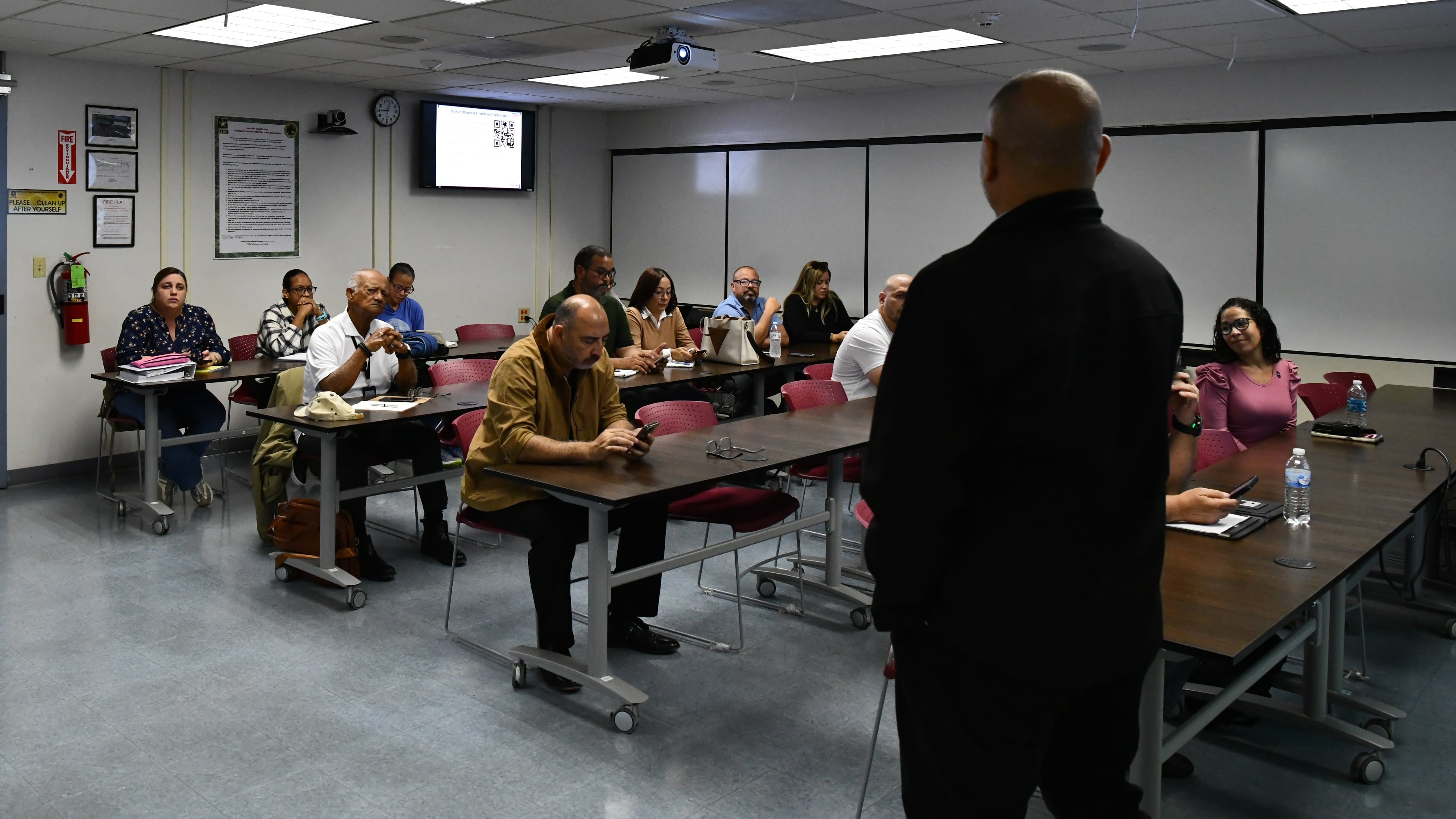More than 100 amphibious combat vehicles already have started service in the Marine Corps fleet ― but the Corps is just now beginning the process of acquiring specialized tools and training environments to teach maintainers how to fix them.
And that’s by design, the program manager for the amphibious combat vehicle says.
On Tuesday, Marine Corps Systems Command hosted an industry day at Quantico, Virginia, inviting prospective contractors to present solutions to fix and maintain the service’s newest swimming vehicle.
Fourteen companies showed up, and ten industry representatives had one-on-one meetings with Marine officials, Mike Olree, Marine Corps amphibious combat vehicle product manager, told Marine Corps Times.
“It was always part of the program plan to go after these training devices, and to do it after we started fielding vehicles,” Olree said. “We run a lot of testing; we think we know a lot about our vehicle, but then you give it to Marines, and they do things that you never expected them to do.”
The Marine Corps began fielding the passenger variant of the amphibious combat vehicle in 2020.
As of Friday, 126 vehicles have been sent to the fleet, all on the West Coast: 36 to Assault Amphibian School in Oceanside, California, where Marines can train on them at the schoolhouse for operations and maintenance; and 90 to 3rd Assault Amphibian Battalion at Camp Pendleton, California. The first East Coast-bound amphibious combat vehicles are expected to arrive at Camp Lejeune, North Carolina, sometime in spring 2023.
So far, Olree said, Marine amphibious combat vehicle drivers and crews have reported the vehicles have a sensitive suspension system that needs careful and regular maintenance. In light of that, the Marine Corps is now calling for one of the maintenance training systems it’s buying, the Part Task Install/Remove Trainer, to include a suspension system mock-up so maintainers don’t have to tear a full operational vehicle apart to practice on the component.
Marines face a learning curve, Olree said, in transitioning from the tracked amphibious assault vehicle to the eight-wheeled amphibious combat vehicle.
“They’re used to a tracked vehicle, where you can just pivot-steer,” Olree said. “A wheeled vehicle can’t do that; you have to do a little bit of a larger turn. If you try to make a really tight turn, it puts a lot of stress on the suspension system … It’s just learning how the vehicle works for Marines.”
The longevity of the amphibious assault vehicle, which first entered service in 1972, means generations of Marines are familiar with its handling and consider it the standard. This, Olree indicated, can create frustration in the fleet.
“Marines need to learn how this vehicle operates. It’s not better or worse than the AAV; it’s just different than the AAV,” Olree said. “Anytime it doesn’t operate like an AAV, they seem to think something’s wrong, right? That’s not necessarily the case.”
The Marine Corps is learning the limitations of the amphibious combat vehicle in other ways, too: this summer, the service issued a two-month pause to all vehicle water operations after two amphibious combat vehicle tipped over and became disabled in high surf off the California coast in July.
The Corps cleared amphibious combat vehicles for full service in September after setting a new high-surf limit of four feet.
In addition to the Part Task Install/Remove Trainer, which will include eight or nine mock-up amphibious combat vehicle parts to practice maintenance on, the Marines want two additional training tools: an augmented-reality classroom simulation environment, which would put trainees inside the vehicle with the help of 3D goggles and haptic gloves and other components, and a touch-screen procedural troubleshooter trainer, which would allow Marines to walk through the process of isolating and diagnosing issues.
While the mock-up parts and VR training environment would be designated for the schoolhouse, screen-based troubleshooters also would be sent to Camp Pendleton, California, and Camp Lejeune, North Carolina, to assist maintainers at operational units, Orlee said.
Olree said he was pleased to hear some companies say they’ve already designed virtual environments similar to what the Marine Corps is seeking, and were optimistic about the timeline for fielding an ACV-specific trainer.
“It’s gaming technology that’s kind of driving that,” Olree said. “That’s the backbone that they’re using to create a virtual environment.”
While none of these high-tech training tools existed for Marines learning to maintain the amphibious assault vehicle, they are rapidly becoming industry standard.
In 2020, the Army contracted with an industry team led by AVT Simulation to develop a hands-on maintenance trainer for the joint light tactical vehicle that married the vehicle body with high-tech training tools.
Marine Corps Systems Command plans to send out a draft request for proposal on the three trainers it wants, with fielding of the actual training components beginning in 2026.





